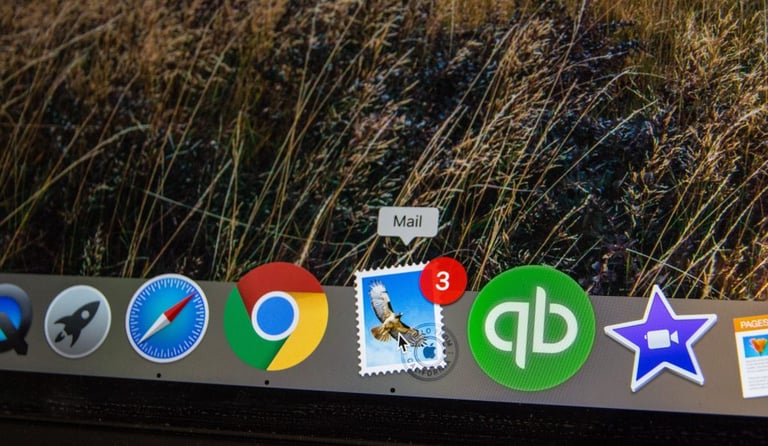Email marketing is one of the most cost-effective ways to grow your business. It allows you to reach a large number of people and engage them with your brand. These may be new customers looking for more information or it may be those who have purchased from you before. In this case, you can leverage past purchase history for future gains. If you’re ready to implement email marketing into your content strategy, we share 10 steps for how to write an email marketing campaign that will get results.
Table of contents
- What is an email campaign?
- Example email campaign
- Types of email marketing
- How to write an email marketing campaign in 10 steps
1. Clarify the purpose (and audience)
2. Set out the sequence
3. Use the subject line effectively
4. Keep it short, sweet and impactful
5. Avoid being too salesy – tell a story
6. Speak your reader’s language
7. Establish trust through your content
8. Provide a clear call to action
9. Don’t inundate your reader
10. Track the results - Benefits of email marketing
- Get help for effective email marketing
What is an email campaign?

An email campaign is a sequence of connected emails sent to a group of people. These emails are sent over a period of time and they can be either personalised or semi-personalised, depending on the purpose.
Email campaigns can be sent manually, particularly if you’re a very small business looking to engage a lead via email contact. Most often though, they’re done by marketing automation. This means that you’ll use an email service (such as Mailchimp) to set up a sequence of email messages to be sent to customers at specific intervals and for specific purposes. You can even connect this to your CRM (customer relationship management software) to identify the correct moment to send emails.
The reason for a sequence as opposed to a single email is that customers face many obstacles and distractions to parting with money or data. Often, you need to gently remind them over a series of emails, each one building the case for why they should trust you.
This brings us to the most important thing to know about an email campaign: it must be relevant and useful for the recipient and where they are in your sales funnel. If you send marketing emails out indiscriminately, customers will see them as spam and unsubscribe from your lists or simply ignore them altogether — and then what’s left? No one likes receiving unsolicited advertisements, so keep this in mind as you write your content for every single email in your campaign (more on that later).
Example email campaign
Let’s imagine an example for a software company that is looking to initiate a lead nurturing email campaign for inbound marketing. Every time someone submits an enquiry about their services, it triggers a 6-step campaign.
Each email will have the same call to action – in this case to book a consultation. However, each email seeks to compound their offering and cement trust using a different angle to encourage readers to book.
The software company’s email sequence might comprise the following messages:
1. Providing information about the company offering
2. Following up with the benefits of working with the company
3. Building a sense of trust with testimonials from others who have used the service
4. Extending a time-limited offer to the recipient
5. Closing with a reminder of the offer before it ends
6. A final request for a consultation
Types of email marketing

You may be wondering what types of emails you can send to your email database. Here are some examples:
Lead nurturing: These are sent to new subscribers who have just signed up for your email list. They’re designed to welcome them into the fold and nurture them along their journey with you. They might include a link to another resource on your website or to book a consultation, which helps them find out more and get started with you.
Newsletters: These can be weekly or monthly newsletters that include information about new products or services, interesting company news or insights from your blog and other articles related to your niche (and audience).
Product launches: A product launch email campaign is a series of emails that you send to your customers before and during the launch of a new product. The purpose of these emails is to increase excitement about the new product, build trust in you as a brand, generate publicity and secure a successful launch with immediate sales.
Promotional offers: It’s always a great idea to reward loyal customers. Promotional offers include exclusive access to sales, discounts, free shipping, special deals and more. This is a great way to improve brand loyalty and increase sales.
Upselling: You might have different tiers of customers who each have different spend thresholds. With careful upselling you can help to increase your customer’s average order value, moving them from a lower spend customer to a higher one. Using their purchase history, you can recommend other related, sometimes higher-value products they may be interested in.
Reengagement: Reengagement email campaigns are all about winning back custom from those on your database who haven’t bought from or engaged with you for a while. They can help you remind them what it was like when they were using your product/service, or introduce them to new features that might interest them.
Abandoned cart: People don’t always buy the first thing they see, especially online. So when they disappear having left items in their shopping cart without completing the purchase, it’s common practice to send a reminder email within 24 hours. You can ask them what stopped them from checking out so you can improve the experience and get more sales. Further into the campaign you could even think about offering a discount, particularly if they’re a new customer.
Read More: What is lead generation in email marketing?
How to write an email marketing campaign in 10 steps
Follow these steps and learn how to write an email campaign:
1. Clarify the purpose (and audience)
The first step in writing an email marketing campaign is to clarify the purpose of your campaign based on the types above. Part of this involves understanding where you fit in the market, why customers should want to engage with you and what kind of information they need from your email communications.
If you have a larger business, it also means segmenting your audience based on where they are in the sales funnel with you and the particular product or promotion you want to push. The more data you collect about your customer base, the more it allows you to segment your audience and target specific groups based on factors such as age, location, interests and previous purchases, helping you target your email campaign exactly where it needs to go.
2. Set out the sequence

Think about how many steps you want to take your reader through. This will depend on a few things like the level of previous engagement and the specific purpose for emailing. For instance, a lead nurturing email may only require 3-6 emails, but if you want to engage an audience base throughout a fortnight-long event, then you may wish to send a daily round-up email.
Of course, if the recipient makes a sale before a sequence has finished, then they won’t receive the remainder of the emails as they’ll have moved through the funnel. Once you know how you’re going to build your argument over the campaign, you’ll have a better idea of how many emails you’ll need and what they need to include.
3. Use the subject line effectively
Once you know what each message will contain, you can come up with the super-engaging subject lines that will get your emails opened. Avoid clickbait, but retain intrigue, and keep it short enough to fit in the window of a desktop or smartphone (whichever your audience uses most).
Here’s an example: “Introducing your new favourite coat”.
Or if you want something more personalised: “Jessica, this coat has your name all over it.”
Savvy marketers use A/B testing on their subject lines to see what kinds of language get a better open rate. This could mean trying half your userbase with a personalised subject line and half without, or half with functional language and half with emotive language.
4. Keep it short, sweet and impactful
Now it’s time to get writing. Aim for around 250 words per email. People are time-poor, so they want to receive what it is you have to say immediately.
A strong header and short bullet-point lists of your most important points convey a clear message concisely. If you have more to say, link out to other pages or items if they want to learn more.
Personalising the email can go a long way to engaging the reader straight off the bat. But also use short paragraphs and sentences. Appeal directly to them using active language and you’ll have a recipe for success.
5. Avoid being too salesy – tell a story
A big mistake many email marketers make is trying to sell too much and too early. Instead, seek to create need and tap into the reader’s pain points. This will help them feel like they need what you’re offering (and then they’ll be more likely to buy from you).
Using storytelling techniques (e.g. moving from problem to agitation to solution) is a good way to hook your reader from start to end.
This could look like the following:
“Dear Jessica,
Every time I meet a fellow business owner, I hear the same thing: there simply aren’t enough hours in the day to achieve everything they need to do.
New business owners often tell me they feel guilty about work impacting their family life, and they wonder whether they made the right decision.
Guess what – they did.
But they just need a little help understanding how to get control back over their lives and their business.
It is possible to maintain a work-life balance when you’re a new business owner with the right guidance. From someone who’s been there.
Book a consultation to find out how.”
Read More: Once upon a time: 3 storytelling copywriting examples and how to tell your brand’s story
6. Speak your reader’s language
You’re not writing for you, you’re writing for your audience. You’re going to struggle to connect with your target market if you use words they don’t understand. Instead, write the way they talk (and spell) so they feel like they’re getting an email from someone who understands them. This will be different for a fashion brand targeting 18-25-year-old women than a hardware company targeting 35-60-year-old men.
Of course, you need to remember that you are a brand in your own right and have a specific tone of voice, but if your market research is accurate it shouldn’t be a million miles away from your core audience.
7. Establish trust through your content

It’s crucial to establish trust with your subscribers before asking for the sale. You can do this by providing them with insightful content that builds an argument with each email. As we’ve already mentioned, you can establish trust with a range of angles, such as:
- Providing insightful, personalised content rather than hard sales
- Providing free resources, tutorials and guides
- Providing social proof of others who have used your service
- Providing samples and discounts
- Providing money-back guarantees
- Providing no-obligation consultations
8. Provide a clear call to action
A call to action (CTA) is the last thing you want your reader to see. It’s what you want them to do next. Use action words like “download,” “sign up,” or “shop now” in your CTAs. These simple and straightforward phrases tell the reader exactly what they need to do next.
You can also be more elaborate, creating a sense of urgency and asking the recipient to confirm their interest. For example, “Yes I want this limited-time offer!” or “I want a seat at the table”.
9. Don’t inundate your reader
HubSpot found that 35% of marketers send their customers 3-5 emails a week. But remember that your recipient might be on multiple campaigns from your company, depending on their purchasing habits (not to mention all the other companies they’re signed up to). Don’t risk alienating your user base by bombarding them. Send emails a comfortable distance apart and always include an unsubscribe link at the top of your email.
10. Track the results
Most email marketing services offer metrics to help you understand how well your campaigns are performing. Key metrics to pay attention to include:
- Open rate (how many people opened the email)
- Click-through rate (how many people clicked the link)
- Conversion rate (how many people bought that product/service after clicking through from an email)
It’s also important to work out the ROI (return on investment). If some customers are consistently not engaging with your communications, ask them for feedback or if they would like to be removed from the subscriber list. This saves you time and money.
Benefits of email marketing
Email marketing is certainly not dead. In fact, HubSpot found 64% of small businesses use email marketing to reach customers and marketers who use segmented campaigns report increases of up to 760% in revenue.
What's more, digital consultant Neal Schaffer found that "email marketers make $42 in sales for each $1 spent sending emails".
Here are some more of the main benefits of email marketing:
- It’s a great way to build relationships with your audience
- It works particularly well when personalised and targeted to customer segments
- It helps you stay in touch at regular intervals
- It’s a handy way to reward customers
- It’s a great way to help customers feel supported
- It’s a cost-effective way to put new products in front of interested audiences
- It can be immediate and reactive to new trends and customer behaviours
- It’s a great vehicle to communicate other elements of a content marketing and inbound marketing strategy
Effective email marketing
Email marketing deserves a place in so many marketing strategies because it’s effective, efficient and can be personalised, especially when paired with marketing automation. We hope we’ve given you the confidence to get started with your own campaign and grow your business!
Of course, it’s not always easy coming up with the content that converts, which is where an email marketer can help.
If you’d like to partner with an email copywriting service, get in touch today.
Header image: Kenny Eliason
Embedded images: Stephen Phillips – Hostreviews.co.uk, Keila Hötzel, Volodymyr Hryshchenko, Clay Banks

